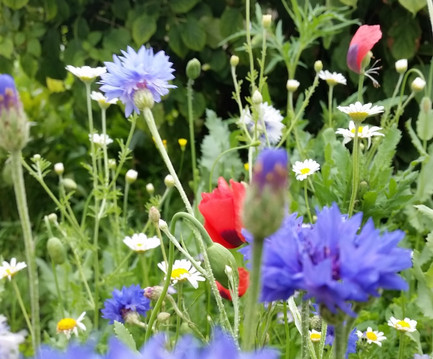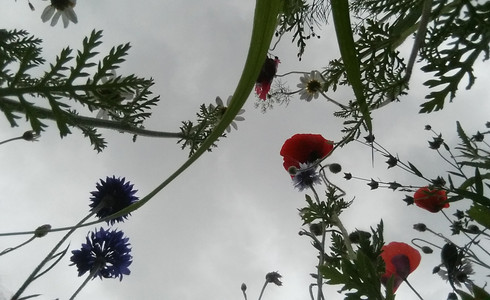Colours of Summer
- Clare
- Jul 5, 2020
- 4 min read
We are already in mid Summer, though this has been somewhat contradicted by the recent damp weather we have experienced. It does seem that we are going backwards in more ways than one at the moment as plans to ease restrictions were reversed in Leicester this week. It is important to stay safe of course, but this must have been hugely disappointing to many.
I know we Brits are said to be obsessed with the weather and therefore I hesitate to mention it (Oscar Wilde said that "conversation about the weather is the last refuge of the unimaginative"), but I must admit I am craving a little sunshine, especially as our movements are still somewhat restricted and a little sunny brightness does make everything seem more cheerful.
I have had a quiet week in terms of gardening, though I can't really blame the weather as, despite being a little sporadic, there have been plenty of dry spells. I have propagated some more of my succulents however and have continued cutting my lavender.

We also sampled the first of the garlic from our garden and have been enjoying more of our potatoes and carrots. At the allotment, the weeds have flourished in the wet weather and the slugs seem to have found the broccoli seedlings. We have harvested some of our broad beans and these were delicious steamed with garlic! The courgette and pumpkin plants are flowering and the corn, spring onions and peppers are looking healthy.
The fruit bushes are heavy with blackcurrants and gooseberries (the redcurrant bush I thought I had planted turned out to be another blackcurrant!). I picked about half of the fruit this week and unfortunately had a disastrous attempt at making gooseberry jam, as I overcooked the fruit and ended up making "gooseberry brittle" instead (though it was rather tasty!).
Slightly further afield, we did manage a short walk in the countryside around lovely Warborough which helped to blow the cobwebs away. As more and more green belt land is being built on these days, it is good to see that there are still a few unspoiled views to be found:
The second of the above images shows Wittenham Clumps in the distance which was a site of ancient Bronze and Iron Age settlements. The "clumps" refers to the group of beech trees atop the hills, which are the oldest known planted hilltop beeches in England and date back over 300 years.
In our own garden, I am loving the colours of our few wildflowers, which appear bright and cheerful even on a cloudy day:
"How does the meadow flower its bloom unfold? Because the lovely little flower is free down to its root, and in that freedom bold" William Wordsworth
There are several wildflower meadows in the U.K. and July is a great time to visit them. The Wildlife Trusts have compiled a list of some of the best at:
Colour is also abundant in other parts of the garden as the following pictures illustrate. The deep red hollyhock is a lovely rich colour and the orange daylilies set against the pink Lavatera look almost exotic. The bright yellow flowers of the curry plant also bring a ray of sunshine to a very dull July.
The statuesque sunflowers have also started to flower. Later in the year the seeds will provide a feast for hungry birds! They are such happy flowers.

More flowers are appearing on the buddleia and, at the same time, a host of red admiral butterflies seem to be appearing out of nowhere to feed on them.

I also finally managed to capture an image of the lovely little thrush that regularly visits the garden. It frequently hides in the willow tree and sings its little heart out. It is lovely to hear, though personally I think the sound of the blackbird just about beats it and, as the essayist Joseph Addison so eloquently put, I would gladly give them fruit for their songs!

The Blackbird by Nora Jane Hopper Chesson
The blackbird has a mouth of gold, though sombre be his feathers;
The lark is for the summer noon, the blackbird for all weathers.
The lark he sets his heart above all things that are on earth,
But the blackbird in the cherry-tree finds rest and food and mirth.
The blackbird is a bonny bird despite his mourning colour;
He sings but all the merrier when earth and skies grow duller.
He whistles and he sings the while he swings from tree to tree,
For a rare mate and a fair mate in the cherry-boughs has he.
Of all the trees in the orchard the cherry tree's the best,
For deep amid its branches, like a blithe heart in its breast,
There lilts a hidden blackbird and he's singing to his dear,
And who would grudge their cherries so sweet a song to hear?
Oh, who would grudge their whitehearts to pay for such a song?
God love the merry blackbird who lifts the year along:
God shield the blackbird's nestlings and the blackbird's brooding wife,
And fill with sweets full measure the days of the blackbird's life.

























Comments